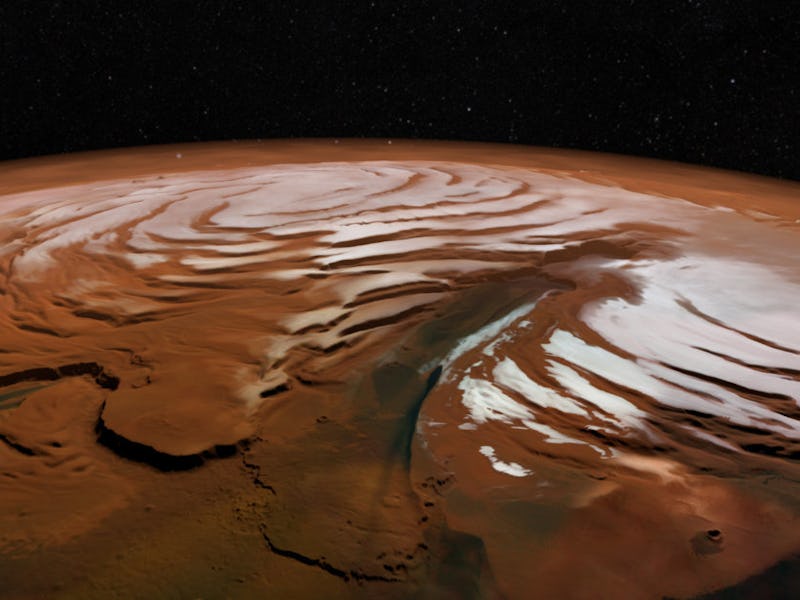If there is a Martian version of Santa Claus, this is where he would live. The European Space Agency’s Mars Express orbiter has been delivering a steady stream of images of the planet’s surface since 2004. Scientists recently pieced them all together for a mosaic revealing the stunning snow-capped canyons of the northern polar ice cap on the Red Planet.
The Martian north pole is roughly the size of the Greenland Ice Sheet on Earth and the “snow” is just over a mile deep, filling in the planet’s Chasma Boreale Canyon, which is about the same depth as the Grand Canyon.
But, the white fluffy stuff isn’t the type of snow one might use to build a snowmartian with. It consists primarily of precipitated carbon dioxide from Mars’s atmosphere, and only occurs during the winter season — which is about four months long. As the planet begins to warm up again, most of the cap will evaporate back into the atmosphere.
Mars also has its own Coriolis effect, which causes moving objects on Earth’s surface to be deflected to the right in the Northern Hemisphere, and to the left in the Southern Hemisphere. This force likely created gusts of wind that push the snow into the pinwheel formations seen below.
In this mosaic, you can see where the center of Mars' north pole.
As the Mars Express orbiter continues to deliver data about the climate and atmosphere of the planet back to scientists, they are able to unravel its mysteries and determine if it is hospitable for life — specifically human life.
Other intriguing information from the Mars Express has found that the planet once harbored water and volcanic activity, and clues that the atmosphere may contain methane. They’re all signs that maybe Earthlings weren’t the first living creatures in our solar system.
